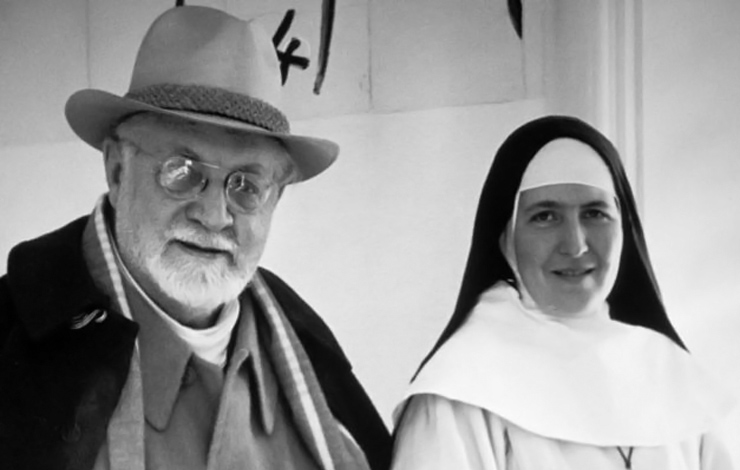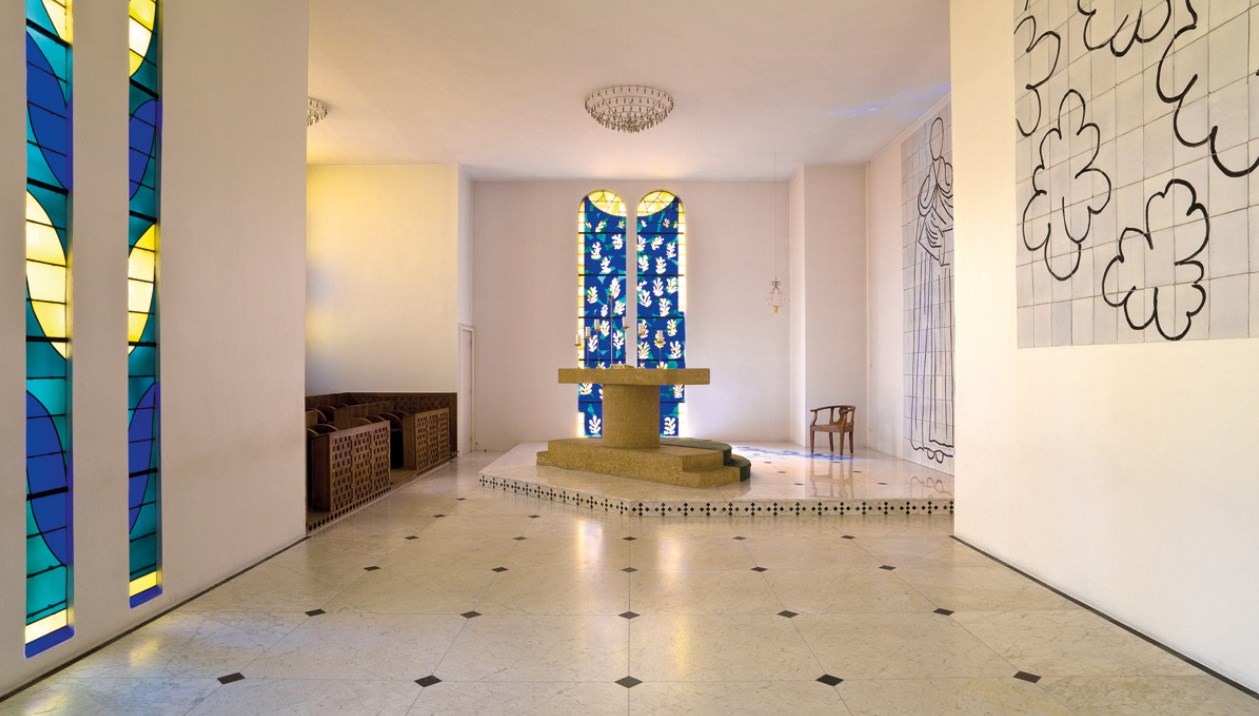
Matisse decorated the chapel of the Dominican nuns in Vence, the order into which his model Monique Bourgeois entered.
The daughter of a military man, she was born in 1921 in Fontainebleau and from an early age she was attracted to drawing, although in fact, as she once confessed to Matisse, she was even more fascinated by color. The painter understood this very well, for he preferred flashes of color to finished strokes.
However, the German occupation of France frustrated the young woman's artistic vocation. Another one arose for her vocationand had the opportunity to assist her father, who was a nurse. sickwho died in the town of Vence, near Nice.
Monique then had to support her family and found a job to look after 73-year-old Matisse in a Nice hotel in the evenings. Long conversations about drawing and painting led the artist to propose to the girl to serve as his model.
This gave rise to works such as The idol o Green dress and orangesThe model's white Greek tunic harmonizes with Monique's black hair. Once the model allowed herself to observe that the features did not correspond to the reality, but Matisse replied that for that reason the photography.

In 1944 Monique surprised the painter with her decision to become a Dominican.
In 1944 Monique surprised the painter with her decision to become a Dominican. Shortly thereafter she would be assigned to the convent of Vence. Matisse, who claimed to be an agnostic, tried to dissuade her, but in vain. This was followed by a correspondence between the two, in which the painter expressed respect for her choice.
They would meet again when she became Sister Jacques Marie and resumed her nursing activity. In 1947 the nun told Matisse that the chapel they had at their disposal was an old garage. It would be necessary to build a new one, and surprisingly, the artist, who felt "called by destiny"He replied that he would take care of all the details himself: not only the stained glass windows, but also the furnishings and the liturgical vestments.
After drawing up the plans, Matisse spent four years building a chapel with a blue and white roof crowned with a wrought iron cross.
During the construction Matisse and Sister Jacques Marie discussed the meaning of a work that many would not understand because they considered it too sober and modernist.
To begin with, the Way of the Cross does not present the 14 Stations of the Cross separately, but as a single whole. They are only silhouettes in black in which the violence of the events is not spared, because, according to Matisse, it is a drama, the deepest of humanity, developed at great speed.
To the right of the altar is another fresco with an enormous figure of St. Dominic, with his unmistakable habit, although his face is devoid of features. This detail also characterizes the fresco of the Virgin and the Child on another wall. Matisse thought that a sign was enough to evoke a face. The rest had to be left to the imagination.
Today it does not attract attention, but it did in 1951, the year of the inauguration, that the altar was in a central place, facing the faithful. But the stained glass windows, in three colors, are the highlight of this work of Matisse.
The green color evokes vegetation; the blue, the sea and the sky, and the yellow, opaque, is the representation of the sun, the image of God that cannot be seen with the eyes.

The Chapel of the Rosary in Vence, France (1950). Considered the last work by Henri Matisse. Where it is reflected the overcoming and sublimation to which the human being can reach in spite of the adversities.
Sister followed the work on the chapel very closely, but we should not forget the advice of Father Marie-Alain Couturier, a Dominican with a passion for art, who worked with great artists such as Léger and Chagall. He used to say: "Better to address geniuses without faith than believers without talent."
Matisse was inspired by him to paint Saint Dominic.
With the collaboration of:
Antonio R. Rubio Plo
Degree in History and Law
International writer and analyst
@blogculturayfe / @arubioplo